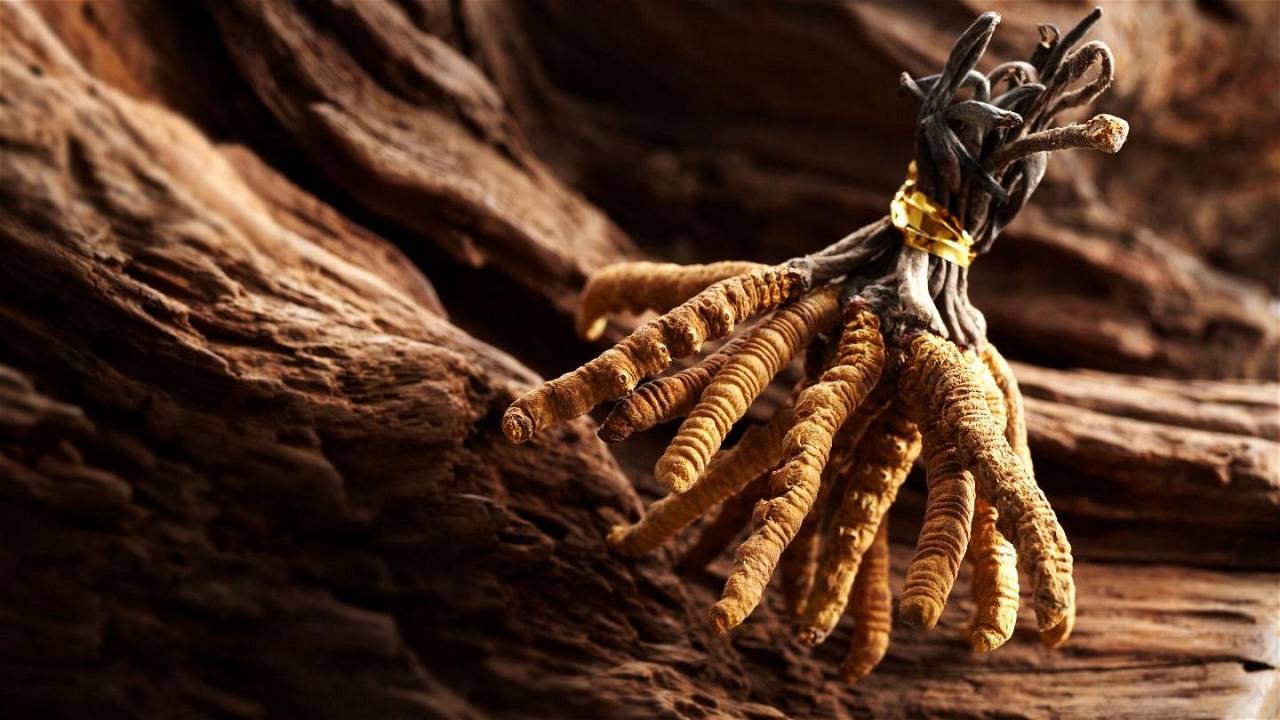
Button mushrooms cost around $4 per pound in the vegetable section of your local supermarket, Shitake mushrooms cost almost twice as much, and black truffles may cost up to $800 per pound. However, that pales in comparison to a rare Asian fungus that sells for $50,000 a pound.
It's known as caterpillar fungus in English. But it's better known in Asia as yartsa gunbu, which means "summer grass, winter worm" in the Tibetan language. It's also referred to as the Himalayan Viagra.
According to Britt Bunyard, a professor at the University of Wisconsin and editor of Fungi Magazine – “this fungus (Cordyceps Sinensis) earns its livelihood by infecting and killing a host insect. The larva of the ghost moth is the bug that has intruded in this situation. This caterpillar will bury itself in the dirt for a few inches. Meanwhile, this fungus is consuming it from the inside out, and in the spring, this... tissue bursts from the skull."
Although it may seem revolting, he claims that – “this pinky-sized mummified caterpillar is the most valuable fungus on the planet. The price isn't comparable to other fungi; it's comparable to gold, platinum, and diamonds."
So, why is it so expensive?
Maybe it's an aphrodisiac, but it's definitely a status symbol
Yartsa gunbu was first referenced in Tibetan medical literature titled "An Ocean of Aphrodisiacal Qualities" from the 15th century. It has become a status symbol as a result of its notoriety. According to Daniel Winkler, who has written extensively on the fungus and leads mushrooming excursions in Tibet, said - “the price has increased by a factor of ten in China over the last decade”. In China, a businessman seeking to impress wouldn't whip out a great pinot noir; instead, he'd fry up some nice geese or duck and stuff it with $1,000 worth of caterpillar fungus, according to Winkler.
Big Money in Small Villages
Because yartsa gunbu is so precious, it has resulted in bloodshed. Seven men went missing in Nepal in August after a quarrel about yartsa gunbu, with two of them, subsequently recovered dead at the bottom of a steep ravine. The deaths drew the attention of writer Eric Hansen. Hansen, a New York-based freelance writer, had lived and traveled in Nepal but had never seen the infamous fungus. So he went to Chinatown in New York City to look for it. "Sure enough there it was, in the first herbal apothecary I went into there were four big glass jars of the stuff selling for between $500 and $1,300 an ounce" – said Hansen.
Hansen was so taken by this worm that he returned to Nepal to witness the harvest. "As soon as they see that yartsa gunba is sprouting in these high, high alpine fields, the whole village just empties out. Everybody climbs up into the mountains and spends pretty much six weeks crawling around looking for the tips of yartsa gunbu” – he said. A successful harvest may more than increase a Nepali's annual income and impact whole villages. As an example, Hansen cites the settlement of Nar.
"The whole town used its yartsa gunbu profits to buy solar panels. So now you have this centuries-old stone hamlet, and on the corner of each building is a solar panel about the size of a board game” – he added.
Potential of the fungus
Yartsa gunbu hasn't really taken off in the United States. It might be because it's too pricey, or because there aren't enough scientific studies to back it up. Professor Britt Bunyard claims that no pharmaceutical firms in the United States have conducted a considerable study on yartsa gunbu. Eric Hansen claims he felt "nothing" when he tried the fungus in Nepal. "My back pain didn't ease, my eyesight didn't sharpen, I didn't feel like springing out of my chair and taking a jog, my loins were not aflame and my libido did not rage." However, as long as yartsa gunbu is popular in China, there are still opportunities for fungal riches to be made.












